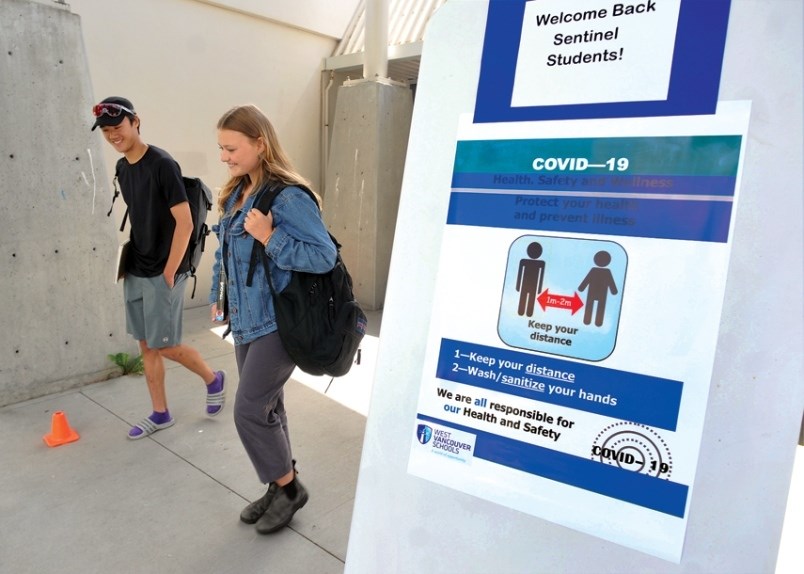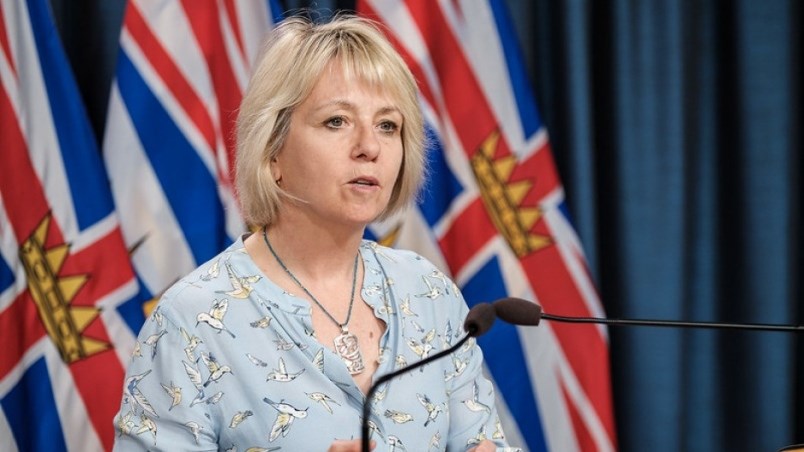B.C.’s medical health officer says she understands why parents may be nervous about sending their children back to school in the fall.
But Dr. Bonnie Henry said Tuesday the back-to-school plan is based on science to minimize risk of transmitting COVID-19.
And she added not having children in school for prolonged periods of time also carries negative consequences.
Henry was responding Tuesday to questions about worries voiced by some parents and teachers, as well as an online petition that has questioned B.C.’s plan to have kids back in the classroom next month and called for that to be voluntary.
“I think this speaks to people's anxieties and we all have anxieties. We're learning as we go with this virus,” said Henry. “But we also know that there are important things that children can only get from being in classroom settings, whether that's full-time all the time, or whether there's some variety. So we are working towards that.”
Henry said she’s confident the plan that minimizes contact while still allowing kids to interact within a “cohort” group is a sound one.
It’s important to remember there are downsides of kids not being in school, said Henry. “And there are many children who are experiencing those now.”
Those include increased anxiety and mental health issues and lack of time away from troubled family situations, she said. Henry added students who are academically challenged are falling behind. “Many of them have not been in a classroom for, it’ll be up to 175 days, and the type of learning that many children need in that classroom setting is something that we need to make a priority,” she said.
Without in-classroom learning, “We know that some children will fall behind and will never catch up. And this will affect them for the rest of their lives,” said Henry. “It is important for us to be able to have school, manage school, despite having a pandemic. And we've done this before, and we can get through this.”
Under B.C.’s back-to-school plan, most students will return to regular classrooms in September. Elementary students will be divided into cohort groups of 60, while high school students will be placed in cohorts of 120 students. The idea is to limit the number of people that both students and staff interact with within the school, while still allowing near-to-normal classroom learning.
Within the cohort group, students will be encouraged to minimize contact “but a two-metre physical distance does not need to be maintained,” according to detailed information provided by the province.
Elementary schools are expected to be able to put the plan in place while still maintaining the usual numbers of students in school.
Some secondary schools might have to go to hybrid model to maintain physical distancing between cohort groups.
Extracurricular activities including sports, arts or clubs can still happen at schools as long as students are physical distancing, according to the province. But inter-school events including tournaments “should not occur at this time.”

If a staff person or student becomes ill with the virus, it will be up to public health officials to work with school administrators to decide who should be notified.
Parents who don’t want to send their kids to school can sign up with school districts for distance education or register to home school their children.
According to the province, in B.C. “less than one per cent of children tested have been COVID-19 positive, and even fewer are suspected to have been infected based on serological testing.”
As well, “There is limited evidence of confirmed transmission within school settings.”
Most children are not at high risk for contracting or spreading COVID-19, according to information from the B.C. Centre for Disease Control, which has posted a document on provincial plans for students going back to school.
“Based on published literature to date, the majority of cases in children are the result of household transmission by droplet spread from a symptomatic adult family member with COVID-19. Even in family clusters, adults appear to be the primary drivers of transmission.”
Children who contract the virus typically have much milder symptoms, and sometimes don’t have any symptoms, according to the BC CDC.
Henry said Tuesday there is no plan to make wearing masks mandatory in schools.
According to the BC CDC, masks aren’t recommended for elementary school children because they increase likelihood of kids touching their faces and requiring assistance and therefore more close contact with school staff and teachers.
“I actually don't believe there's evidence to support mask wearing by children in the classroom,” said Henry.
Henry said Tuesday that continuing to have low levels of community transmission in B.C. is an important part of the plan to send kids back to school.
Henry also appeared to reject a call from the BC Teachers’ Federation to push the start date for school further into September.
“I think we just need to set a date and plan for it,” she said.



